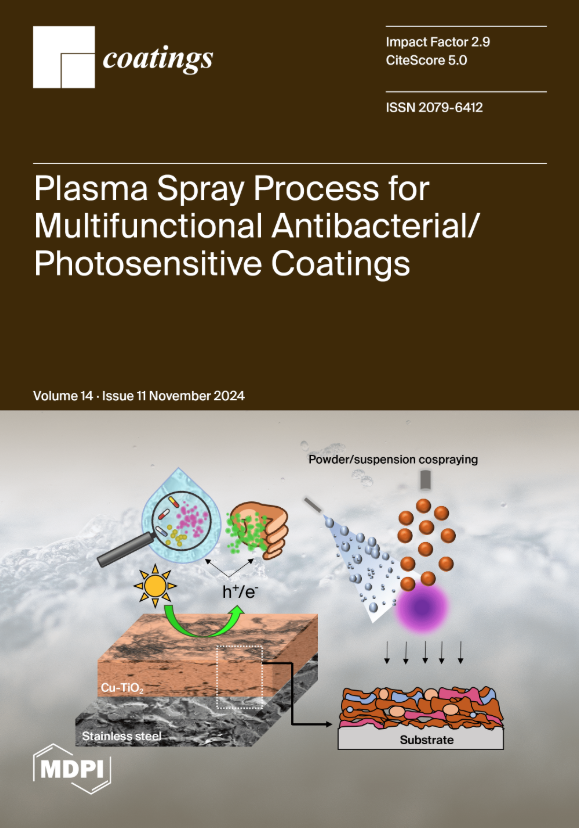受仿生学启发的柔性皮肤减阻研究
IF 2.8
3区 材料科学
Q2 MATERIALS SCIENCE, COATINGS & FILMS
引用次数: 0
摘要
水下航行器通常依靠电池或其他能源运行,减少阻力可显著降低能耗并延长运行寿命。受泥鳅皮肤结构的启发,我们设计了一种带有鳞片和粘液孔的柔性结构。首先,进行了数值模拟。为了准确展示柔性流场与流体流场之间的相互作用,并捕捉板块的运动边界,采用了双向流固耦合模拟方法。数值结果表明,柔性结构对减少阻力有积极作用。在水道实验中,对柔性结构和非柔性结构的减阻效果进行了比较。在水流速度为 2 米/秒和粘液流速为 0.1 米/秒时,两者都显示出最佳的阻力减小效果。柔性结构的最大阻力减少率为 28.5%,而非柔性结构为 22.8%。这种差异归因于柔性结构改变了近壁边界层的流动模式,降低了边界层的速度梯度,并增加了边界层的厚度。本研究的结果可为未来柔性表面减阻技术的研究提供指导。本文章由计算机程序翻译,如有差异,请以英文原文为准。
Research on Drag Reduction for Flexible Skin Inspired by Bionics
Underwater vehicles typically rely on batteries or other energy sources for operation, where drag reduction can significantly lower energy consumption and extend operational endurance. Inspired by the skin structure of loaches, a flexible structure with scales and mucus pores was designed. First, numerical simulations were conducted. To accurately demonstrate the interaction between the flexible flow field and the fluid flow field and to capture the movement boundaries of the plates, a bidirectional fluid–structure interaction simulation method was used. The numerical results indicate that the flexible structure has a positive effect on drag reduction. In channel experiments, the drag reduction effects of flexible and non-flexible structures were compared. Both showed optimal drag reduction at a water flow speed of 2 m/s and mucus flow speed of 0.1 m/s. The maximum drag reduction rate for the flexible structure was 28.5%, compared to 22.8% for the non-flexible structure. This difference is attributed to the flexible structure altering the flow pattern of the near-wall boundary layer, reducing the velocity gradient of the boundary layer, and increasing its thickness. The findings of this study can provide guidance for future research on flexible surface drag reduction technologies.
求助全文
通过发布文献求助,成功后即可免费获取论文全文。
去求助
来源期刊

Coatings
Materials Science-Surfaces, Coatings and Films
CiteScore
5.00
自引率
11.80%
发文量
1657
审稿时长
1.4 months
期刊介绍:
Coatings is an international, peer-reviewed open access journal of coatings and surface engineering. It publishes reviews, research articles, communications and technical notes. Our aim is to encourage scientists to publish their experimental and theoretical results in as much detail as possible. There is no restriction on the length of the papers. Full experimental and/or methodical details must be provided. There are, in addition, unique features of this journal:
* manuscripts regarding research proposals and research ideas will be particularly welcomed
* electronic files or software regarding the full details of the calculation and experimental procedure - if unable to be published in a normal way - can be deposited as supplementary material
 求助内容:
求助内容: 应助结果提醒方式:
应助结果提醒方式:


